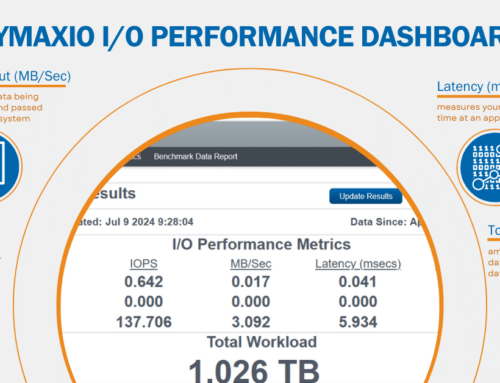This month Condusiv® announced the most significant development in the Diskeeper® product line to date – expanding our patented fragmentation prevention capabilities beyond server local storage or direct-attached storage (DAS) to now include Storage Area Networks, making it the industry’s first real-time fragmentation solution for SAN storage.
Typically, as soon as we mention “fragmentation” and “SAN” in the same sentence, an 800 pound gorilla walks into the room and we’re met with some resistance as there is an assumption that RAID controllers and technologies within the SAN mitigate the problem of fragmentation at the physical layer.
As much as SAN technologies do a good job of managing blocks at the physical layer, the real problem why SAN performance degrades over time has nothing to do with the physical disk layer but rather fragmentation that is inherent to the Windows file system at the logical disk software layer.
In a SAN environment, the physical layer is abstracted from the Windows OS, so Windows doesn’t even see the physical layer at all – that’s the SAN’s job. Windows references the logical disk layer at the file system level.
Fragmentation is inherent to the fabric of Windows. When Windows writes a file, it is not aware of the size of the file or file extension, so it will break that file apart into multiple pieces with each piece allocated to its own address at the logical disk layer. Therefore, the logical disk becomes fragmented BEFORE the SAN even receives the data.
How does a fragmented logical disk create performance problems? Unnecessary IOPS (input/output operations per sec). If Windows sees a file existing as 20 separate pieces at the logical disk level, it will execute 20 separate I/O commands to process the whole file. That’s a lot of unnecessary I/O overhead to the server and, particularly, a lot of unnecessary IOPS to the underlying SAN for every write and subsequent read.
Diskeeper 15 Server prevents fragmentation from occurring in the first place at the file system layer. That means Windows will write files in a more contiguous or sequential fashion to the logical disk. Instead of breaking a file into 20 pieces that needs 20 separate I/O operations for every write and subsequent read, it will write that file in a more contiguous fashion so only minimal I/O is required.
Perhaps the best way to illustrate this is with a traffic analogy. Bottlenecks occur where freeways intersect. You could say the problem is not enough lanes (throughput) or the cars are too slow (IOPS), but we’re saying the easiest problem to solve is the fact of only one person per car!
By eliminating the Windows I/O “tax” at the source, organizations achieve greater I/O density, improved throughput, and less I/O required for any given workload – by simply filling the “car” with more people. Fragmentation prevention at the top of the technology stack ultimately means systems can process more data in less time.
When openBench Labs tested Diskeeper Server, they found throughput increased 1.3X. That is, from 75.1 MB/sec to 100 MB/sec. A manufacturing company saw their I/O density increase from 24KB to 45KB. This eliminated 400,000 I/Os per server per day, and the IT Director said it “eliminated any lag during peak operation.”
Many administrators are led to believe they need to buy more IOPS to improve storage performance when in fact, the Windows I/O tax has made them more IOP dependent than they need to be because much of their workload is fractured I/O. By writing files in a more sequential fashion, the number of I/Os required to process a GB of data drops significantly so more data can be processed in less time.
Keep in mind, this is not just true for SANs with HDDs but SSDs as well. In a SAN environment, the Windows OS isn’t aware of the physical layer or storage media being used. The I/O overhead from splitting files apart at the logical disk means just as many unnecessary IOPS to SSD as HDD. SSD is only processing that inefficient I/O more quickly than a hard disk drive.
Diskeeper 15 Server is not a “defrag” utility. It doesn’t compete with the SAN for management of the physical layer by instructing the RAID controllers on the how to manage the data. Diskeeper’s patented proactive approach is the perfect complement to a SAN by ensuring only productive I/O is processed from server to storage to keep physical servers and SAN storage running like new.
With organizations spending tens of thousands of dollars on server and storage hardware and even hundreds of thousands of dollars on large SSD deployments, why give 25% or more performance over to fragmentation when it can be prevented altogether for a mere $400 per physical server at our lowest volume tier?




Leave A Comment
You must be logged in to post a comment.